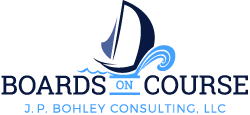Tip #20 Identify Your Organization's Key Stakeholders/Owners
In our last Tip for Effective Boards, we defined key stakeholders or owners as those people on whose behalf the board governs and to whom it is accountable, those key people who provide legitimacy to a board’s authority and serve as the “source for the organization’s purpose and values.” (British Standards Institution, Code of Practice for Delivering Effective Governance of Organizations, 2013)
So, who are these people?
Sometimes this question is very easy to answer. Publicly traded companies are owned by shareholders. Members own such organizations as professional associations, labor unions, and credit unions. Governmental or public sector organizations are owned by the general public residing in the districts these organizations serve.
At other times, this question may not be so easy to answer. Who are the owners or key stakeholders of community non-profit organizations such as hospitals, social service agencies or counseling centers? According to Dr. John Carver, developer of the Policy Governance® model, a couple concepts may be helpful here: geography and community of interest. (Ends and the Ownership, A Carver Policy Governance Guide, Jossey-Bass, 2009) A non-profit organization may define its ownership as being limited by certain geographical boundaries – a neighborhood, city, county, or state. It may also define its ownership in terms of people who are concerned about and supportive of their organization’s mission. The GEM model (Governance Excellence Model) refers to such owners as “purpose centered owners.” (www.strive.org) For charitable organizations, donors may be identified as a key category of owners.
While the concept of “ownership” is foundational to the Policy Governance® system, it is important for all boards, whether they embrace Policy Governance® or not, to be very clear about those people who are the source of their authority and legitimacy, those people on whose behalf they govern and to whom they are accountable, and to engage in ongoing dialogue with them.
If you haven’t already done so, consider making a commitment to developing clarity about who your owners/key stakeholders are.
In the next Tips for Effective Boards, we’ll continue this discussion by focusing on how to engage in an ongoing conversation with your organization’s owners and what to talk about.
For more information about the Policy Governance® system, please go to www.BoardsOnCourse.com/policy-governance.
